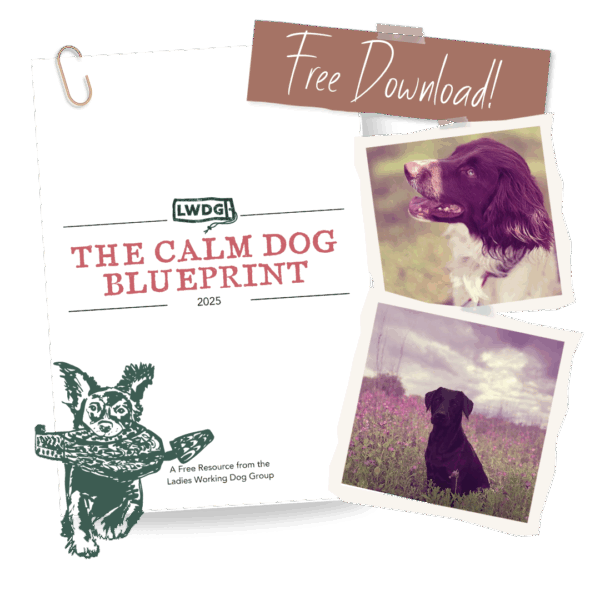The Ancient Story Behind Your Gundog’s Instinct
Ever wonder why your gundog sometimes seems caught between wild instincts and home comforts? It’s not just you, this tug of war goes back thousands of years. In this episode of Found It, Fetched It, we dive deep into the incredible journey from wolves to the dogs we know and love today. Understanding this evolution and our gundog’s instinct helps us be more patient, compassionate, and realistic about what our dogs can and can’t do. So, let’s explore how thousands of years of domestication shaped their brains, behaviours, and bonds with us.
The Origins of Domestication: Wolves Meet Humans
The story begins 15,000 to 30,000 years ago when wolves started hanging around human settlements. It wasn’t a one-time event but likely happened in different places independently. Some wolves scavenged leftovers near campsites, while others may have been taken in by children who found wolf pups and brought them home. This early relationship was mutually beneficial, wolves got food and safety, and humans gained early warning systems and hunting partners.
How Domestication Changed Dogs’ Brains and Behaviour
Over time, friendlier, less fearful wolves survived better near humans. This “self-selection” led to changes we call domestication syndrome, floppy ears, curled tails, and longer playful puppy phases. Unlike wolves, dogs learned to read human expressions, follow pointing fingers, and seek our guidance. They became social partners, not just independent hunters. But despite these changes, many ancient instincts remain, scent marking, guarding, and chasing prey are still hardwired.
The Shift In Our Gundog’s Instinct – From Working Tools To Companions
For thousands of years, dogs were tools , hunting helpers, herders, guards. Selective breeding started around 10,000 years ago with agriculture, intensifying in the last 300 years. Breeds became more specialised for jobs, but recently, the focus has shifted to companionship. Now, many dogs are bred for looks and temperament rather than purpose. This shift creates a tricky balance: we want dogs with working instincts but also calm pets who lounge on the sofa.
Why Understanding Evolution Helps Us Train and Love Our Dogs Better
Knowing your dog’s evolutionary background helps you see their behaviour with fresh eyes. That yappy terrier or chasing spaniel isn’t just being difficult, they’re wired for a job that might not fit your home life. Training works best when we respect these instincts and work as a team with our dogs. Remember, they’re not wolves, but they carry that legacy. Compassion and realistic expectations go a long way in building a happy, balanced relationship.
Conclusion
Our dogs are living history, a beautiful blend of wild ancestors and loving companions. By understanding their evolution, we can be kinder, clearer, and more confident in our training. Every chase, bark, and cuddle connects us to thousands of years of partnership. For more insights, listen to the full episode and join us next time as we explore genetics and how it shapes our working dogs today. Remember, progress over perfection, your dog is learning just like you.
You may want to look at
https://ladiesworkingdoggroup.com/surviving-the-teenage-phase-managing-adolescent-gundog-behaviour/ – For advice on managing common gundog behaviours
Get Your Free 'LWDG Calm Dog Blueprint'
5 simple steps to help your dog focus, reduce overexcitement, and make training feel easier — without shouting, stressing, or second-guessing yourself.

- animal behaviour
- canine evolution
- dog behaviour
- dog training
- domestication
- gundog instincts
- Gundog Training
- LWDG
- podcast insights
- Severn Lenses Series
- wolf dogs
- working dog
Join Our Online Community!
Jump on our email list for free tips and insights delivered to your inbox monthly. No spam - just quick bites of value.




